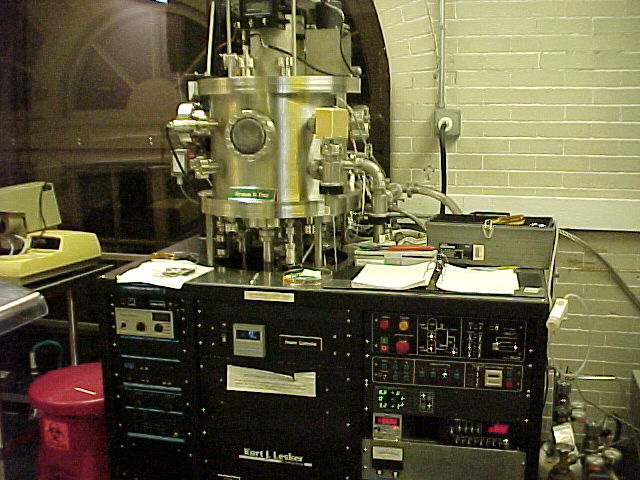|
|
KJLesker Sputtering System
The Lesker sputtering system is a large vacuum chamber where an inert
(or reactive) gas atmosphere is introduced along with the generation of a
plasma across a target material and substrate. Sputtering occurs when
these gas particles are ionized in an electric field (producing a gas plasma)
and then directing them toward the source or target, where the energy of
these gas particles physically dislodges, or "sputters off," atoms
of the source material.
|
|
Name |
Office |
Extension |
Email |
|
George Lopez |
|
|
glopez@cs.cmu.edu |
Qualified Users List
|
Name |
Office |
Extension |
|
|
|
|
Ê |
Ê |
|
|
|
Ê |
|
|
etc. |
|
|
|
Standard Operating Procedures
Instructions
Applications Notes
Useful Links
Miscellaneous
Sputtering
Calibration Tip
Typically
when sputtering with the Lesker or Indel you'll want to double
check the
sputtering rate and an easy way to do this is with lift-off.>Although lift
off with Kapton Tape is quite common, a simpler, more elegant solution was
taught to me by Matt Moneck:
1. Simply
draw a line on the wafer with a Sharpe marker (or photoresist pen).
2.
Sputter the wafer as intended.
3. Put
the wafer in an acetone ultrasonic bath for 5 minutes to lift off
the
sputtered metal over the drawn line.
If any of the metal hasn't
lifted
off, simply rub it away with an acetone soaked Q-tip.
Since the
Sharpe comes off with acetone, there's no adhesive residue on
the
wafer. Even better, since the Sharpe
line is so low, the "bunny
ears"
effect seen from lifting the Kapton tape doesn't occur.
by
Michael Vladimer
|
|
